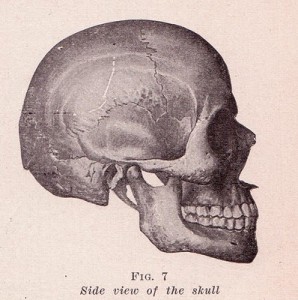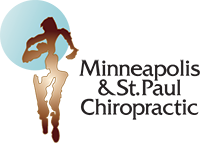Neck Pain: Are You Looking In All The Right Places?
 Neck Pain? Look to the head, jaws and neck like we do in our Minneapolis/St Paul Chiropractic office, or a piece of the puzzle can be overlooked, keeping you with ongoing problems. The body’s structural (bones, joints, muscles, etc.) system is the most integrated, inter-related, interdependent system we have. The old song “the toe bone’s connected to the foot bone, and the foot bone’s connected to the ankle bone…etc., etc.” had it right. All the parts are connected, and influence all the other parts. All this is orchestrated by the brain and nervous system, which is actually part of this overall structural system – the neuromusculoskeletal system. Having said this, there are certain areas that are so connected that they operate like one unit. The following make up one of these “units”.
Neck Pain? Look to the head, jaws and neck like we do in our Minneapolis/St Paul Chiropractic office, or a piece of the puzzle can be overlooked, keeping you with ongoing problems. The body’s structural (bones, joints, muscles, etc.) system is the most integrated, inter-related, interdependent system we have. The old song “the toe bone’s connected to the foot bone, and the foot bone’s connected to the ankle bone…etc., etc.” had it right. All the parts are connected, and influence all the other parts. All this is orchestrated by the brain and nervous system, which is actually part of this overall structural system – the neuromusculoskeletal system. Having said this, there are certain areas that are so connected that they operate like one unit. The following make up one of these “units”.
- Head
- Jaws
- Neck
The base of the head forms joints with the top bone (vertebra) in the neck. When they get “stuck” or fixated either from injury like a whiplash or repetitive overuse, like sitting at a computer for hours on end, or bad posture like stooping over, nerves, nerve endings and muscles that connect these structures become irritated and inflamed. The result is often stiffness, achiness, out and out pain, and referred pain like headaches. Increased tension or pull in the muscles from the stress of being connected to the bones not moving can limit the movement of that part of the neck, and make other parts of the neck work differently to compensate. This stress on those areas ends up with additional problems there. Where the skull bones unite are “suture” type joints that are reportedly capable of moving too. As in other joints if they become “fixated” then loss of even that tiniest of movement can cause difficulties too.
 The 2 jaw (TMJ) joints need to work in unison with each other to allow normal opening, closing, biting, etc. If one or the other gets “thrown” off or fixated, again from injury or repetitive stress, they can’t work together. Like a hinge and latch on a garden gate, if one or the other gets into trouble, the other part eventually gets into trouble too, because of the stress placed on it. The connections between the neck and jaws, including the nervous system and mechanical workings, are well documented. The two areas are definitely influencing each other when moving either area. Just try tipping your head up and down, or biting and see what happens with your jaw and neck. You’ll feel changes if you’re not purposely controlling one part or the other. When one is “off” it creates more stress, and eventually a problem of normal movement in the other. This leads to eventual “break-down”, and the symptoms that go along with it like pain.
The 2 jaw (TMJ) joints need to work in unison with each other to allow normal opening, closing, biting, etc. If one or the other gets “thrown” off or fixated, again from injury or repetitive stress, they can’t work together. Like a hinge and latch on a garden gate, if one or the other gets into trouble, the other part eventually gets into trouble too, because of the stress placed on it. The connections between the neck and jaws, including the nervous system and mechanical workings, are well documented. The two areas are definitely influencing each other when moving either area. Just try tipping your head up and down, or biting and see what happens with your jaw and neck. You’ll feel changes if you’re not purposely controlling one part or the other. When one is “off” it creates more stress, and eventually a problem of normal movement in the other. This leads to eventual “break-down”, and the symptoms that go along with it like pain.
The neck itself, is the most fragile and mobile region of the spine. Besides this it has to carry the head, which is about 10% of the body’s overall weight. In addition, looking at the entire structure from the ground up, this is the place that eventually has to compensate for any imbalances of the structure from the feet up. In other words if a person’s back happens to curve in one direction away from normal, the neck will often curve in the opposite direction to keep the body balanced. It’s been theorized that the brain wants to keep a lot of the incoming information “organs” like the eyes, ears, etc. level with the horizon so that we can better orient ourselves to our environment. All the jobs the neck has to perform makes it quite a workhorse of the spine. Again, with injury or repetitive overuse in addition to all of its normal duties, the joints “shut” down, and we get into trouble. Outside of serious or very obvious injury causing pain, the other issues and problems can come on quite silently, and for some time. But, they are problems just the same. Eventually the abnormal joint movements and abnormal load bearing cause the bones in the neck to change – that change is the arthritis we associate with old age. Before these arthritic changes that are seen on X-ray, discs can bulge, ligaments can stretch making an area “unstable”, and certainly there can be inflamed nerves and other tissues. It’s a pain waiting to happen, with the right triggering event.
Skilled management is key, not only to control an acute or chronic episode of pain, but for correct follow-up to prevent future episodes, and to keep the neck healthy and functioning correctly for years to come. Always seek out the assistance of a professional, competent in the complexities and interplay of all of the areas that may be causing your neck pain.
By Dr. William T. Norlin Chiropractor in Minneapolis/St Paul, Minnesota











